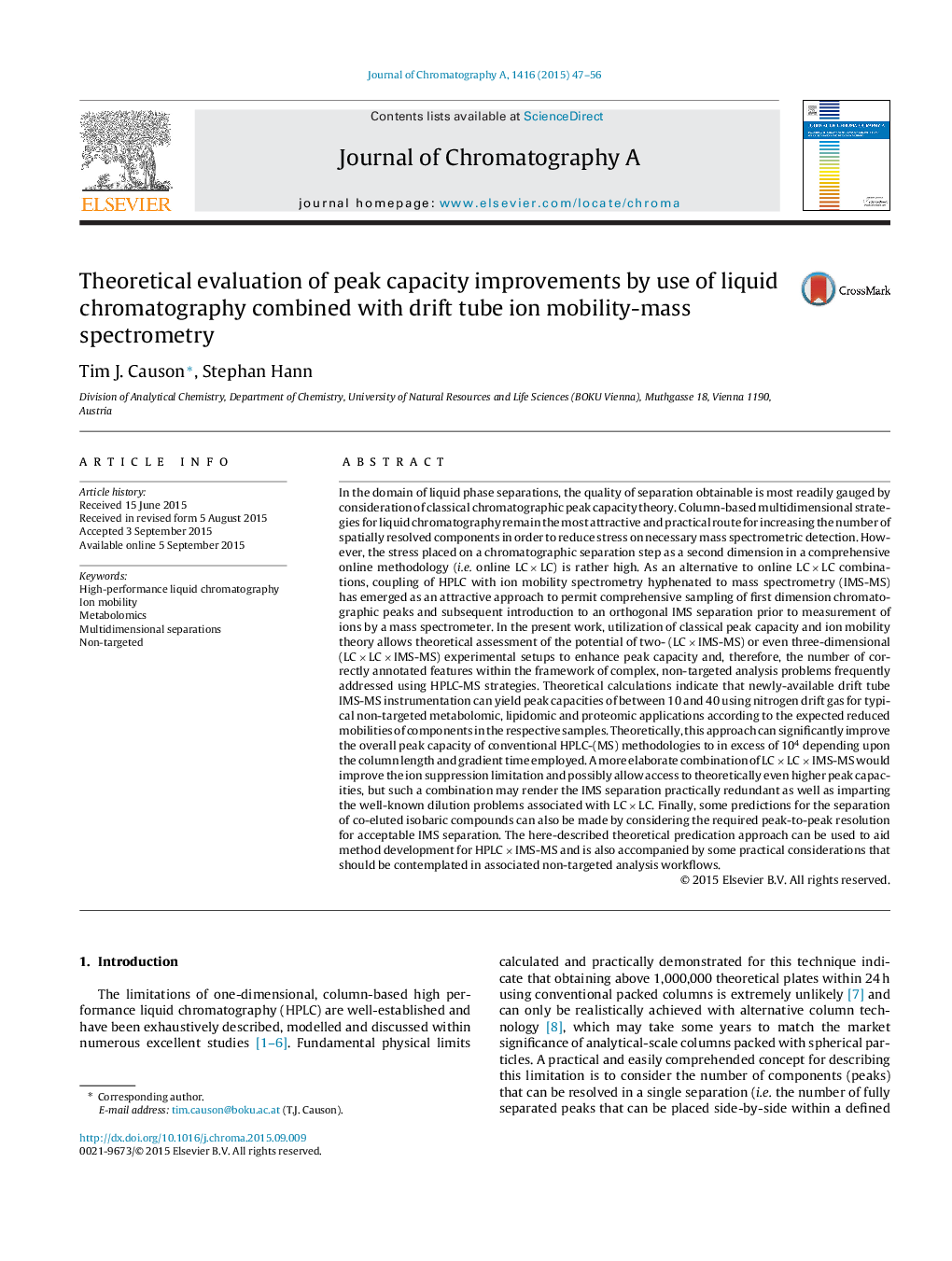| کد مقاله | کد نشریه | سال انتشار | مقاله انگلیسی | نسخه تمام متن |
|---|---|---|---|---|
| 1199086 | 1493510 | 2015 | 10 صفحه PDF | دانلود رایگان |
• Peak capacity principles are applied for describing HPLC coupled to drift-tube IMS-MS.
• IMS peak capacities of 10–40 for typical, non-targeted analysis problems are possible.
• A theoretical approach is used to gauge potential of peak annotation improvements.
• Minor CCS differences can be sufficient to help with isobaric separation problems.
In the domain of liquid phase separations, the quality of separation obtainable is most readily gauged by consideration of classical chromatographic peak capacity theory. Column-based multidimensional strategies for liquid chromatography remain the most attractive and practical route for increasing the number of spatially resolved components in order to reduce stress on necessary mass spectrometric detection. However, the stress placed on a chromatographic separation step as a second dimension in a comprehensive online methodology (i.e. online LC × LC) is rather high. As an alternative to online LC × LC combinations, coupling of HPLC with ion mobility spectrometry hyphenated to mass spectrometry (IMS-MS) has emerged as an attractive approach to permit comprehensive sampling of first dimension chromatographic peaks and subsequent introduction to an orthogonal IMS separation prior to measurement of ions by a mass spectrometer. In the present work, utilization of classical peak capacity and ion mobility theory allows theoretical assessment of the potential of two- (LC × IMS-MS) or even three-dimensional (LC × LC × IMS-MS) experimental setups to enhance peak capacity and, therefore, the number of correctly annotated features within the framework of complex, non-targeted analysis problems frequently addressed using HPLC-MS strategies. Theoretical calculations indicate that newly-available drift tube IMS-MS instrumentation can yield peak capacities of between 10 and 40 using nitrogen drift gas for typical non-targeted metabolomic, lipidomic and proteomic applications according to the expected reduced mobilities of components in the respective samples. Theoretically, this approach can significantly improve the overall peak capacity of conventional HPLC-(MS) methodologies to in excess of 104 depending upon the column length and gradient time employed. A more elaborate combination of LC × LC × IMS-MS would improve the ion suppression limitation and possibly allow access to theoretically even higher peak capacities, but such a combination may render the IMS separation practically redundant as well as imparting the well-known dilution problems associated with LC × LC. Finally, some predictions for the separation of co-eluted isobaric compounds can also be made by considering the required peak-to-peak resolution for acceptable IMS separation. The here-described theoretical predication approach can be used to aid method development for HPLC × IMS-MS and is also accompanied by some practical considerations that should be contemplated in associated non-targeted analysis workflows.
Journal: Journal of Chromatography A - Volume 1416, 16 October 2015, Pages 47–56
